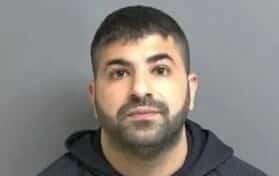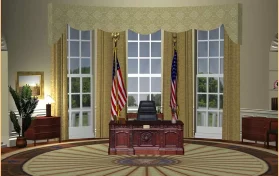
Amidst the labyrinthine corridors of New York City’s political landscape, a seismic shift has occurred, thrusting the delicate balance between law enforcement and civic leaders into stark relief. In a narrative rife with irony, a cohort of anti-police New York City Council members, known for their vocal criticism of law enforcement, have found themselves in an unexpected quandary, beset by a series of menacing threats that have prompted them to seek protection from the very entity they’ve often vilified: the New York Police Department (NYPD).
The saga unfolds against a backdrop of tension and contradiction, encapsulating the complexities inherent in the intersection of public service and personal safety. It is a narrative that transcends the confines of mere political discourse, delving into the realms of security protocols, ideological clashes, and the intricacies of governance in one of the world’s most iconic metropolises.
At the heart of the controversy lie four Democratic council members: Chi Ossé, Shahana Hanif, Yusef Salaam, and Carlina Rivera. These individuals, known for their unabashed critiques of the NYPD and advocacy for contentious policies, have found themselves thrust into an unforeseen predicament, as threats against their persons have forced them to reconsider their stance on law enforcement.
The genesis of the saga can be traced to a series of alarming incidents, detailed in internal communications among council staffers and corroborated by NYPD sources. The council members and their aides were reportedly inundated with threats of varying degrees of severity, prompting palpable concern among the recipients.
Expressions of dismay and apprehension reverberated within the hallowed halls of City Council chambers, as staffers exchanged messages lamenting the “scary” nature of the threats and extolling the responsiveness of law enforcement agencies. Such sentiments, juxtaposed against the backdrop of the council members’ vocal opposition to police practices, underscored the complexity of the situation.
“I’ve clutched my non-existent pearls at some of the threats made,” remarked one staffer in a text message to a colleague, encapsulating the sense of vulnerability pervading the council’s inner circle. The irony of council members, who have espoused anti-police sentiments, now seeking the protection of law enforcement, was not lost on some observers.
“It’s disgusting,” voiced one Brooklyn police officer, reflecting a sentiment shared by many within the law enforcement community. “Since they don’t want police officers, why don’t they go out and hire private security?” The officer’s rhetorical query encapsulated the prevailing sentiment among some quarters, highlighting the perceived incongruity of council members decrying police practices while simultaneously relying on police protection.
Yet, amidst the cacophony of conflicting narratives, underlying tensions simmered beneath the surface, fueled by ideological fault lines and divergent interpretations of civic responsibility. The council members in question, known for their advocacy of progressive policies and vocal support for various social justice causes, have often found themselves at odds with the prevailing orthodoxy within law enforcement circles.
Their advocacy for measures such as the “How Many Stops Act,” which mandates increased documentation in low-level police encounters, has been met with fierce opposition from some quarters within the NYPD. The council members’ alignment with pro-Palestinian protests and their criticism of Israeli policies have further exacerbated tensions, igniting impassioned debates within New York’s diverse communities.
The confluence of these factors has imbued the council members’ plea for police protection with a symbolic weight that transcends the immediacy of their safety. It represents a convergence of divergent worldviews, where the imperatives of public safety collide with the imperatives of social justice, testing the limits of ideological coherence within the realm of governance.
Amidst the furor surrounding the threats, questions lingered regarding the broader implications of the council members’ predicament. Some observers pointed to the inherent vulnerability of public officials in an era marked by heightened political polarization and escalating rhetoric.
“The demonstrations were sparked by Israel’s retaliation to an Oct. 7 sneak attack by Hamas terrorists,” noted one commentator, alluding to the broader geopolitical context within which the threats unfolded. The council members’ alignment with pro-Palestinian protests, while consistent with their progressive ethos, has also exposed them to heightened scrutiny and criticism from pro-Israeli constituencies.
Yet, amidst the turmoil and uncertainty, glimpses of resilience and solidarity emerged, underscoring the resilience of New York’s civic fabric in the face of adversity. Council members Shahana Hanif and Carlina Rivera, both recipients of threats, were steadfast in their commitment to their constituents, even as they navigated the complexities of personal safety and public duty.
“I am proud to echo the calls for peace made by so many of my Palestinian, Muslim, and Jewish neighbors,” declared Hanif in a statement following her arrest at an anti-Israel rally. Such sentiments, reflective of the council members’ unwavering commitment to their principles, served as a poignant reminder of the enduring power of civic engagement in shaping the trajectory of public discourse.
As the saga unfolds, its ramifications reverberate far beyond the confines of City Hall, echoing across the landscape of American politics and beyond. It is a narrative that defies facile categorization, confronting us with the complexities of governance in an era marked by profound ideological divides and existential challenges.
In the crucible of adversity, the true mettle of leadership is forged, as public officials grapple with the exigencies of their roles amidst uncertainty and peril. It is a test of character and conviction, where the imperatives of public service collide with the imperatives of personal safety, forging a path forward fraught with uncertainty and possibility.





